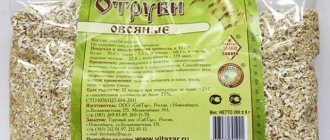Tuna belongs to the mackerel family.
The red meat has a dense structure and an interesting taste. It is worth finding out the calorie content of tuna in kcal for different processing and preparation methods, and familiarizing yourself with the dietary qualities of the seafood. Are you cooking tuna?
- Yes 89%, 626 votes
626 votes 89%626 votes - 89% of all votes
- No 10%, 68 votes
68 votes 10%
68 votes - 10% of all votes
- I don't eat fish 1%, 8 votes
8 votes 1%
8 votes - 1% of all votes
Total votes: 702
28.11.2019
- Yes 89%, 626 votes
626 votes 89%626 votes - 89% of all votes
- No 10%, 68 votes
68 votes 10%
68 votes - 10% of all votes
- I don't eat fish 1%, 8 votes
8 votes 1%
8 votes - 1% of all votes
Total votes: 702
28.11.2019
×
You or from your IP have already voted.
KBJU canned in its own juice
The calorie content of canned tuna in its own juice is 96 kcal per 100 g of product. How much protein, fat and carbohydrates does it contain:
- tuna proteins – 22.5 g;
- fats – 0.7 g;
- carbohydrates – 0 g.
Cans of tuna in its own juice are the most popular type of canned food. Fish retains beneficial qualities: vitamins, fatty acids, macroelements. Canned food is free of carbohydrates, cholesterol, and harmful fats.
@ lunamarina — depositphotos.com
Canned fish in a jar is valuable because after catching the seafood, it must be processed or frozen as quickly as possible so that histamine does not accumulate in it. The hormone in the active phase leads to allergies. If this does not happen, processing technologies are violated, then the seafood can harm the body.
Types of tuna
The six most common types of tuna are:
- Albacore, also sometimes called albacore tuna. This species is found in almost all waters of the world's oceans. The only exception is the polar regions. Albacore can reach 1.5 meters in length and, thanks to its very high-quality meat, it is a valuable object of industrial fishing. Albacore meat is especially common in America.
- Big-eye tuna, which can reach 2.5 meters in length and weighs up to 400 kg. A distinctive feature of this species is its wide fin, which has up to 14 dorsal spines. During migration, bigeye tuna descends into cold, deep waters, which is unusual for other species. There he feeds abundantly, and his heart functions more actively. But tuna cannot stay in cold water all the time and periodically needs to swim to the surface to warm up.
- Blackfin tuna, the smallest member of the family, does not exceed one meter in length and usually weighs no more than 20 kg. The fish lives only off the coast of Brazil, in the western Atlantic Ocean. Unlike other species, blackfin tuna feed on squid and crabs, small larvae and shrimp. Sometimes, of course, it also feeds on small fish, but in much smaller quantities. This species has a short lifespan; a 5-year-old fish is already considered old.
- Bluefin tuna is one of the fastest and largest fish of the family. The fish feeds mainly on mackerel, herring and squid, which other types of tuna usually cannot catch.
- Atlantic bluefin tuna, found in the Atlantic. Bluefin tuna used to live in the Black Sea, but recently the Black Sea population has disappeared. It is visually similar to the Pacific blue, so the two can easily be confused. Among other species, bluefin tuna is the most valuable. There are cases when his carcass was bought for more than 100 thousand dollars. Mostly, this kind of money is paid for fish by the Japanese, who use it to prepare national dishes.
- Southern bluefin tuna, which can be found in the waters of the southern hemisphere. This species is currently endangered, as it has been the mainstay of the fishery since the 50s, as a result of which its population has decreased by 90%. Therefore, now catching this species is possible only within clearly defined quotas.
In oil
The calorie content of tuna in vegetable oil is 190 kcal per 100 grams. Seafood contains a lot of protein, which breaks down well. The dish contains vitamin A and many useful elements:
- calcium;
- iodine;
- zinc;
- phosphorus;
- manganese;
- sodium.
This composition can improve metabolism and prevent the formation of cancer cells.
People are interested in how much BJU is contained in the product. 100 grams of canned butter contain 27.1 g of protein, 9 g of fat, and no carbohydrates.
@ viperagp — depositphotos.com
How to choose
The tuna fishing period is from May to early September, this is the best time to buy steaks and fillets, they will be fresh and most healthy. The color of the meat is similar to beef; a quality product should have a uniform color, without streaks, spots or inclusions. The fillet should be dense and firm. Discoloration of the flesh in the spine area indicates that the product has been frozen several times and should not be taken.
It is better to choose canned food in its own juice. Carefully inspect the jar; there should be no swelling or traces of rust on it.
KBJU fresh
Tuna is a moderately fatty variety. The nutritional value of fresh fish is 101 kcal per 100 g. Protein contains 23 g, fat - only 1 g. Tuna meat does not have a strong pronounced taste, for this reason in France it is called fish or sea veal. This name is partly explained by the structure of the pulp - it is dense, reminiscent of meat.
In Japan, tuna is used to make sushi because its raw meat is not susceptible to parasites.
The fresh product is best cooked on the grill; when fried, it contains a lot of calories.
What are the health benefits?
For adult men and women
Prevention is always cheaper and more effective than treatment. This truism applies to both diseases and natural age-related changes.
No product or technology can completely restore lost health and beauty.
Healthy food containing enough nutrients and biologically active substances is one of the conditions for prolonging the youth of the body.
Tuna is a high-protein product , so it is recommended to include it in diets for athletes and people losing weight.
Men will appreciate this fish for strengthening male strength and maintaining muscle mass.
Women will prefer the high nutritional value of the product combined with low calorie content. The vitamin complex contained in this fish is a real gift from nature for ladies, preserving their attractiveness.
Vitamin E improves skin condition and supports fertility in both sexes.
What you can cook from char fish in a tasty, quick and healthy way - read the article.
You can learn about the beneficial properties of anchovy for the body of men, women and children from this publication.
Read about the health benefits and dangers of blue whiting fish in our article.
During pregnancy
Is tuna good for expectant mothers? Contrary to expectations, consuming this nutritious and healthy product during pregnancy and breastfeeding is not recommended .
This is due not so much to the nutritional value of tuna, but to the ability of heavy metals to accumulate in the body. Meat from old animals, if consumed frequently, can harm mother and child.
During pregnancy, women experience transient kidney problems. The high protein content in food turns from an undoubted advantage into an undoubted disadvantage.
During uncomplicated pregnancy, tuna can be included in the diet , but in very limited quantities - no more than 200 g per day and no more than twice a week.
Before making a final decision regarding this delicacy, you should consult your doctor.
For children
This fish is included in children's diets only after 3 years of age due to the potential danger of mercury content. For older children, tuna can be given according to the recommended age allowances.
This product promotes the normal harmonious development of the baby's mental and physical abilities.
Complete animal protein fully covers the needs of a growing body for essential amino acids.
One serving contains approximately half the daily value of B
Phosphorus, calcium and vitamin D contribute to normal skeletal development, iodine is necessary for the development of intelligence.
For the elderly
In old age, products that inhibit the development of cardiovascular and other diseases come to the fore. Tuna is famous for its ability to normalize metabolic processes - carbohydrate and lipid metabolism.
Consumption of this tasty product slows down the progression of atherosclerosis and reduces the likelihood of cancer processes.
Thanks to the rich content of vitamins and microelements, the product slows down age-related changes in cartilage tissue.
Vitamin D in combination with calcium and phosphorus in an easily digestible form is an almost ideal means of preventing osteoporosis.
Micro- and macroelements
The benefits of fish and the amount of kcal are determined by its composition, concentration of vitamins and elements. Tuna contains many substances that help the body systems function normally:
- a large amount of vitamin PP (niacin), which replenishes 77.5% of the daily requirement per 100 grams of seafood;
- vitamin B6 (pyridoxine) replenishes 40% of the norm;
- vitamin B1 thiamine is concentrated in a volume of 20% of the daily dose;
- phosphorus calculated at 35%;
- sulfur in a ratio of 19%;
- potassium – 14%;
- Among the microelements, chromium, iodine, and cobalt stand out, 100 grams of which provide 400%, 180% and 33% of the daily requirement.
@utima — depositphotos.com
The calorie content of tuna or the energy value of the product, kcal, shows the amount of energy that the body receives from the product during its digestion.
Among the microelements, chromium, selenium and cobalt stand out. The latter substance renews cells, removes cholesterol, and slows down the aging process. Cobalt helps proteins and fats to be synthesized faster. Chromium can have a positive effect on heredity by maintaining DNA integrity.
Macronutrients are as important as micronutrients. 300 g of tuna eaten covers the daily requirement of phosphorus. The substance takes part in the formation of cells. 100 g of seafood contains 190 mg of sulfur, which is equal to 19% of the norm. The substance is necessary for healthy skin, bone tissue, and improved hair condition.
Potassium strengthens the heart muscles, equalizes blood pressure, and reduces the manifestations of arrhythmias, such as tachycardia, angina pectoris, and extrasystole. The macronutrient is required for the transmission of nerve impulses to the brain. It also affects the normal functioning of the brain and memory, strengthening it. Potassium is involved in the development of the intestines, kidneys, bones and muscles.
Potential danger, contraindications
Any product that is consumed in moderation can cause harm. There are categories of people for whom tuna is not recommended or contraindicated .
These are pregnant women, nursing mothers and children under 3 years of age. Why is tuna harmful?
Since this fish accumulates mercury in its tissues , it is better to avoid eating it. If expectant mothers can occasionally enjoy this delicacy, small children are introduced to it only at 4 years of age.
High protein content may harm people with kidney disease . Dishes made from tuna meat are contraindicated in cases of severe renal failure. Restrictions may also be imposed for other kidney diseases.
The product is strictly prohibited for people with a severe allergy to sea fish , especially if they are intolerant to mackerel meat.
Why tuna can be dangerous:
Dietary properties
Tuna is recommended for consumption during a diet. In three days of proper nutrition, people lose 2 kg of excess weight. This is due to the low calorie content. Fish must be consumed throughout the diet. It contains a lot of protein, which improves the body's functioning. The substance forms the skeletal system and muscle tissue. But fat does not enter the body. In addition to taking tuna, you need to drink 1.5-2 liters of water per day.
Fish is eaten fresh or canned; it contains less calories.
Tuna contains Omega-3 polyunsaturated fatty acids, which provide the body with energy throughout the day. The effectiveness of seafood consumption is explained by its low fat content, only 0.8% per 100 grams of product.
@Katyjay — depositphotos.com
When eating tuna, it is important to prepare low-calorie side dishes. Potatoes, pasta and rice do not go well with seafood. It is recommended to choose broccoli, zucchini, and green beans. The ideal option is a salad of fresh tomatoes and cucumbers.
The dietary properties of seafood are unique. Meat is not only low in fat and calories, it is chock full of nutrients. Omega-3 polyunsaturated fatty acids, which fish is rich in, are involved in the production of the hormone leptin. The substance balances appetite and the amount of food consumed. The hormone controls the process of overeating and helps to achieve maximum saturation of the body.
Description
Tuna is a fish from the Scombridae family. This fish is quite large and some specimens reach three meters in length and weigh up to 500 kg. The largest tuna known to history weighed 1355 kg. The fish has a slightly elongated, spindle-shaped body, and leathery keels are located parallel to the caudal peduncle. There is a sickle-shaped fin on the back.
Tuna is predominantly found in the warm waters of tropical and subtropical seas, and can often be found in the Pacific, Indian and Atlantic oceans. In Ukraine, tuna is found in the Black Sea. The fish prefers to stay in small schools and swim at great depths. Schools swim from place to place in search of cephalopods, pelagic crustaceans and small fish. Tuna is a fast fish and can cover quite a long distance in a short time. It can reach speeds of up to 77 km per hour thanks to its powerful circulatory system and perfect body structure, suitable for constant movement. The energy that tuna expends when moving makes its blood several degrees higher than the temperature of the surrounding water.
More on the same topic:
- LaskaS Writes,
First of all, I would like to note that eating tuna for dietary purposes is a good way to lose weight without losing muscle mass. The fact is that when losing weight, it is very important not to completely exclude fats from the diet. Otherwise, our body will not break down its own fat in internal organs. But while adhering to a diet, you should consume the “right” fats, which will help burn excess internal reserves.
How to cook
Healthy fish fillets should not be washed, just dry with a paper towel. Then you can choose a recipe and cook.
Salad
You will need:
- a can of canned food (preferably in its own juice);
- pickled cucumber – 4 pcs.;
- bulb;
- 2 boiled eggs;
- a can of canned corn;
- mayonnaise or sour cream for dressing;
- salt/pepper - to taste;
- greens (any, for decoration).
Preparation:
- Cut the cucumbers, chop the onion.
- Chop the eggs.
- Remove the canned fish from the juice and chop.
- Mix all ingredients.
- Season, salt/pepper, add herbs.
Pie
For the test you will need:
- potato broth - ½ cup;
- milk – ½ cup;
- dry yeast – 1 sachet;
- sugar – 1 tbsp. l.;
- sunflower oil – 50 ml;
- flour – ½ kg;
- 2 cans of canned food;
- bulb;
- 100 g each of cheese and mayonnaise;
- egg;
- any greens to taste.
It is better to take hard cheese.
Preparation:
- Dissolve sugar and yeast in potato broth.
- Heat the milk, pour into the broth, stir.
- Add flour.
- Make a small hole in the center of the resulting dough and add the butter.
- Knead the dough properly. It should become soft, not sticky.
- Roll into a bun, cover with cling film and leave for 50 minutes in a warm place. If the dough increases in size, it should be slightly crushed.
- Prepare the filling. Chop the onion into small pieces.
- Remove canned tuna from the can, remove bones, and mash.
- Grate the cheese on a grater (large).
- Mix onion, fish and cheese, add chopped egg. Season with mayonnaise (add herbs if desired) and mix.
- Grease a baking dish with butter and lightly sprinkle with flour.
- Place the dough so that the resulting circle is larger in diameter than the bottom of the mold.
- Place the filling in a ring and cover it with dough. There should be no filling in the center.
- On the middle part, make 8 cuts so that you get triangle-rays.
- Fold them to the edges, securing them to the dough.
- Brush with yolk and leave for 20 minutes.
- Place the pie in the oven (mode 200 °C, time - 30 minutes).
If desired, the cake can be sprinkled with sesame seeds, this will make it look even more elegant.
Grilled tuna
Required:
- fillet – 300 g;
- spinach – 100 g;
- teriyaki sauce – 30 ml;
- cream – 100 ml;
- sesame – 20 g;
- salt ½ tsp;
- olive oil.
Preparation:
- Cut the fillet into pieces.
- Prepare the marinade: mix the sauce, olive oil and salt.
- Immerse the fillet in the marinade for half an hour.
- After this, fry for 2 minutes on each side.
- In another frying pan, mix chopped spinach with cream and simmer for 7 minutes.
- Place the finished delicacies on a plate, pour over the sauce, sprinkle with sesame seeds and you can serve!
Recipe? Recipe!
How to cook this fish at home? Here is one of the recipes:
Tuna in tomato:
- Tuna -1 kg.
- Onions - 2 pieces
- Tomatoes -1 kg.
- Garlic - 2 cloves
- Wine (white) – ½ glass
- Oil, salt and pepper - to taste
- Breadcrumbs, parsley - also to taste
The fish is cleaned of bones and skin, salted and peppered. Then roll in flour and fry. Separately, lightly fry the chopped onion and garlic (in olive oil), and then add the tomatoes and simmer everything together until a thick mass is obtained. The resulting mass is wiped in a colander, salt, sugar, wine and spices are added to it - to your taste. This will give us the sauce.











